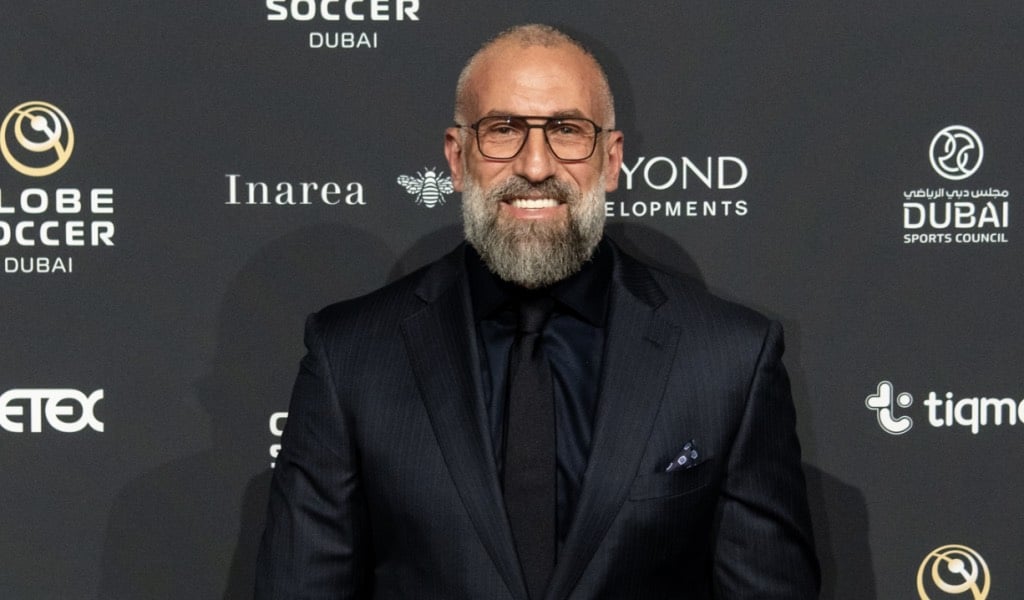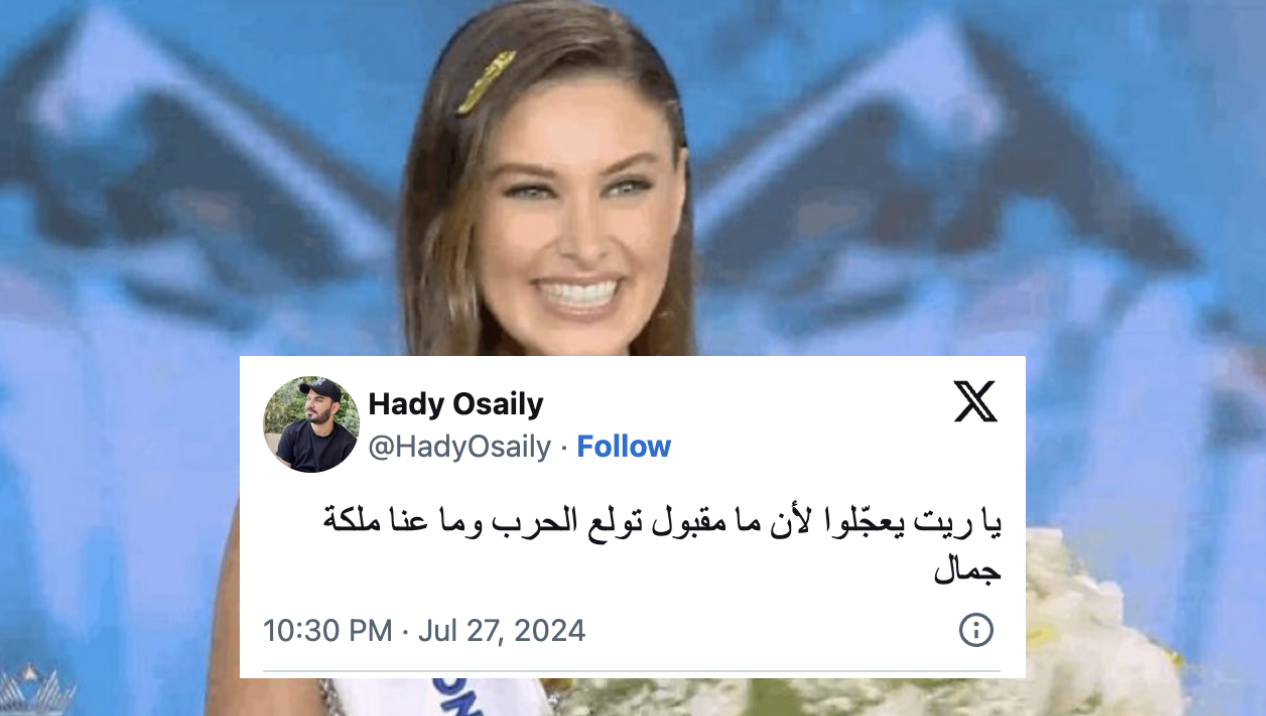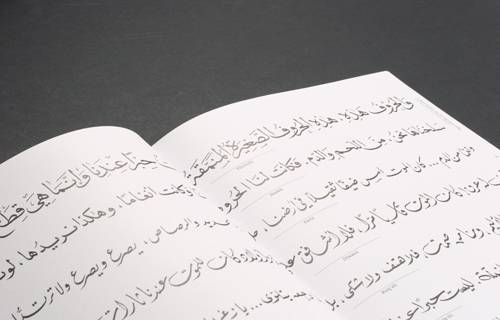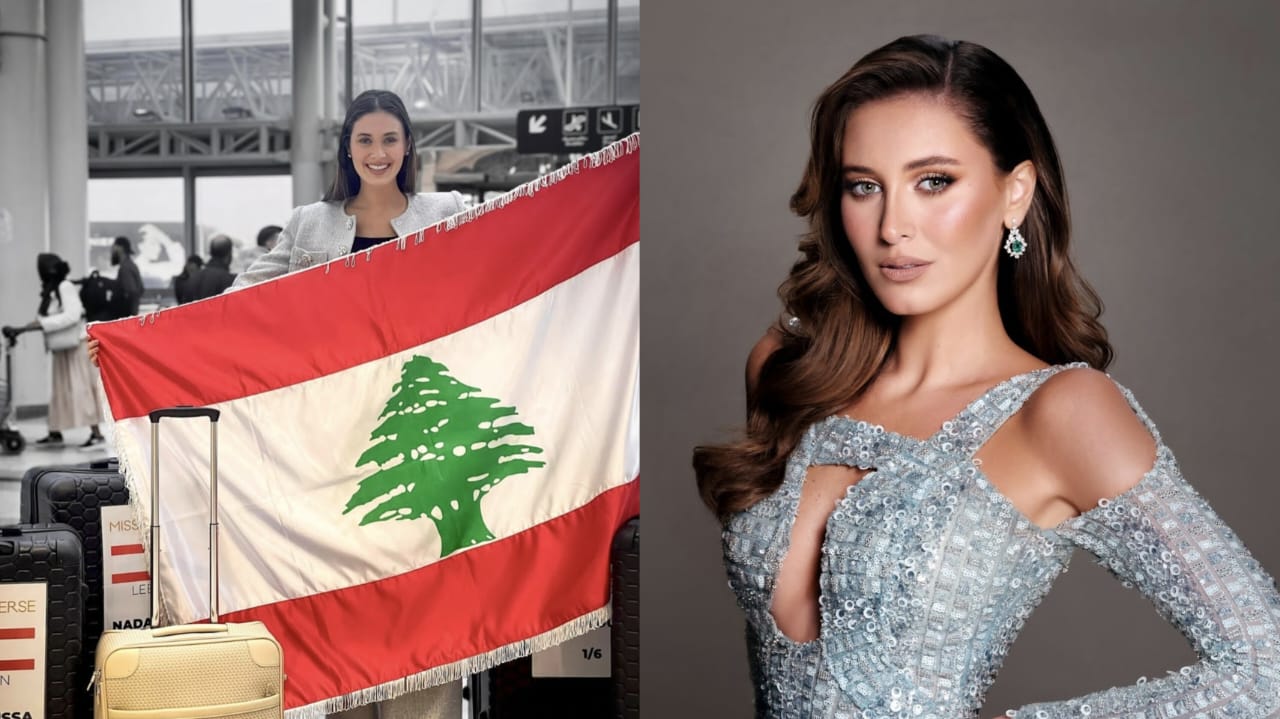The Ten Best Art Exhibitions of 2014 in Beirut
For all its credit, as one of the cultural centers of the Arab region, the focus of artistic activity in 2014 remained overseas with Lebanese artists present in important shows and institutions the world over. Ranging from Frieze Masters to Video Brazil, from Nice’s Villa Arson to ArteVida Rio de Janeiro, it was a great year for Lebanese art, but the offer in Beirut was a bit more modest than in previous years.
There were still many shows, and the local galleries and art institutions, many of them old-timers, managed to put together great shows and kept Beirut on the map of the art world, after it was named by the British publisher Phaidon, one of the art cities of the future, back in 2013.
After a number of art spaces either closed down or moved to part-time status, the city’s leading art venues still remain unchallenged, demonstrating strength, and preparing 2015 for big openings along with some new kids on the block.
“A Museum of Immortality” by Anton Vidokle
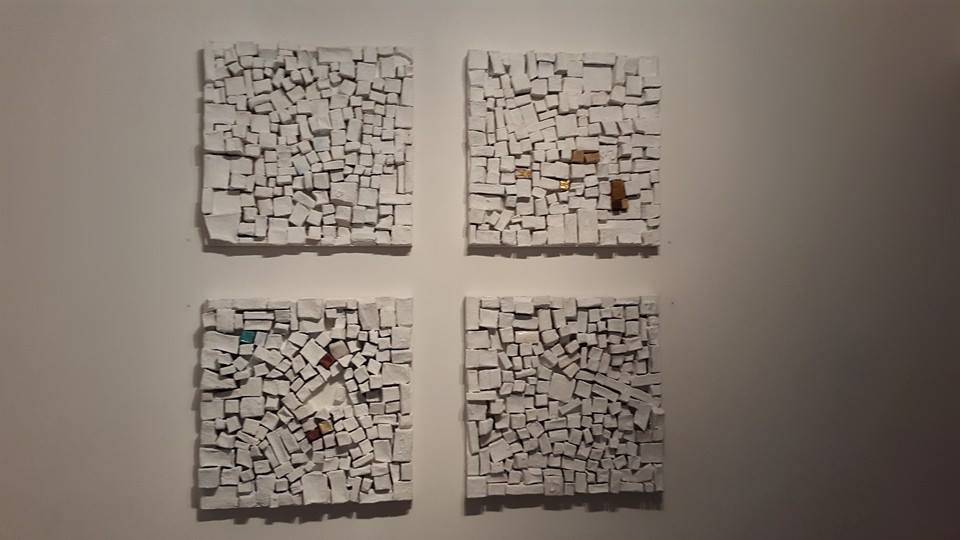
Ashkal Alwan, June 11 – July 18
The most conceptually challenging exhibition of the year in Beirut, “A Museum of Immortality” was not a solo exhibition, but a collective adventure incorporating works by more than 50 artists, writers, curators, filmmakers and architects who took part in the 2013-2014 edition of Ashkal Alwan’s Home Workspace Program following a curatorial framework dictated by Boris Groys. Based on Russian philosopher Nikolai Fedorov’s idea of the “Common Task”, under which it would be possible through technology to bring back to life all men who have ever lived, museum is presented as the ideological scenario in which the whole of mankind is immortalized. Accordingly, the museum presented a staged historiography of works and concepts, pointing towards the impossibility of redemption.
“Gres et Porcerlaines” by Simone Fattal
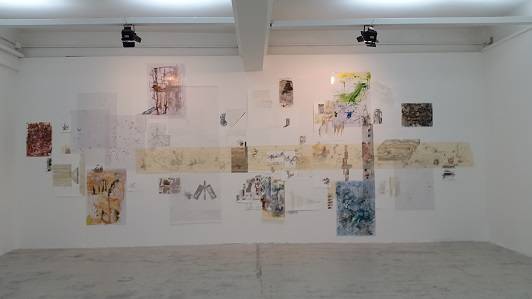
Galerie Tanit, June 24 – September 6
Born in Damascus but quintessentially Lebanese, writer and sculptor Simone Fattal, established since the 1980s in California, returned to Beirut with these subtle sculptures, somewhat amorphous and inscribed in the pictorial language of the Ancient Near East, but circumscribed by a certain minimal formalism which belongs to the very particular aesthetics of Fattal. The artist, who returned to plastic arts in 1989 – coinciding with the end of the war – spent long years writing, editing and publishing through the celebrated Post-Apollo press an experimental literary work which has no doubt inflected her work. In the catalogue of the exhibition, written by a fellow writer, artist and collaborator, Etel Adnan notes how she gives to muted earth a voice, personality and soul.
“In Transit” by Tanbak

Agial Art Gallery, September 2 – September 20
Although she has been widely exhibited since the 1990s, Tanbak is a less familiar name for the younger generation. However, the Lebanese painter, a product of a multicultural upbringing, explores through minimal sculptural paintings the notion of displacement with a personal story in mind: the refugee camps of the Armenians in Bourj Hammoud in the pre-war generation. The result is a clean, abstract language that points to the universal notion of exile, anchored in the political history of the 20th century in Lebanon with different waves of refugees that have made up the complex social landscape of the country. These dystopian urbanities are a cultural mapping of Beirut’s ambivalent topography and an architectural reflection on the invisibility of recent history in the public domain.
Galerie Tanit, September 9 – September 20

Perhaps the strangest exhibition of the year in Beirut, this untitled group show with the participation of Gheith Al-Amine, Aissa Deebi, Bassam Kahwagi, Jacko Restikian, Walid Sadek and Shawki Youssef, demonstrated why the legendary Tanit remains a space open to innovation and countercurrents. The strange thing is not that this singular group of artists worked together, but that the show is not composed of different pieces. Instead, it is one collective piece produced by the entire group. Based on a journalistic image taken in Tripoli and found by Restikian, the work is a fragile window or observation point into the realities of violence and destruction, often diluted in the rapid flow of images, offering a potential fire line. The work, however, gives no clues or signals; it remains open to interpretation.
“Breath is a Sculpture” by Guiseppe Penone
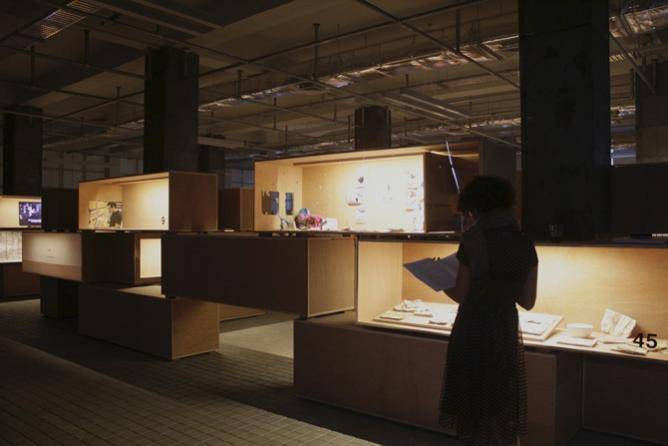
Beirut Art Center, September 15 – November 29
One of two exhibitions this year in Beirut devoted to the Italian Arte Povera movement, “Breath is a Sculpture” was a complex exhibition, encompassing decades of Guiseppe Penone’s work, one of Italy’s most prominent living artists. Around the central theme of ‘breathing’, embodied in a seamless index of practices and formats, one finds an articulation of his vital approach: surrendering to the forces of pure unmediated life, while measuring them at the same time, in a set on a conceptual practices. Signature works of the artists are produced anew in this context marked by the BAC and inspired, as in the Arte Povera, by political upheaval. Deliberately against formalism, the show had to be experienced by the senses and remains actively ephemeral.
Michel Basbous Restrospective
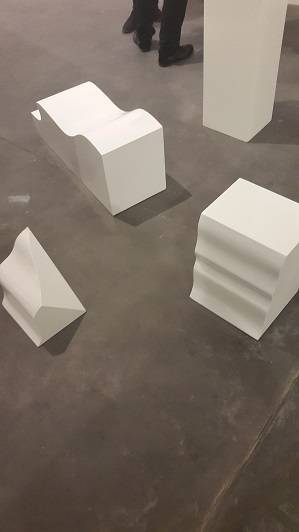
Beirut Exhibition Center, September 16 – October 26
The first retrospective of one of Lebanon’s best known artists, the sculptor Michel Basbous (1921-1981), took on a rather unusual perspective on the artist’s work. Rather than showcasing his well-known monumental works from his famous Rachana estate, the curators focused on pioneering works across different materials that until now had not occupied a place in the collective imagination, for they had been privately exhibited during Basbous’ life and kept behind walls in his personal museum and in the homes of Lebanese collectors. Based on smaller works simultaneously drawing on pre-classical art and an early architectural modernism, the exhibition was also accompanied by a book edited by the art historian Gregory Buchakjian, with contributions by expert writers and acquaintances of the artist.
“Nudes” by Chafic Abboud
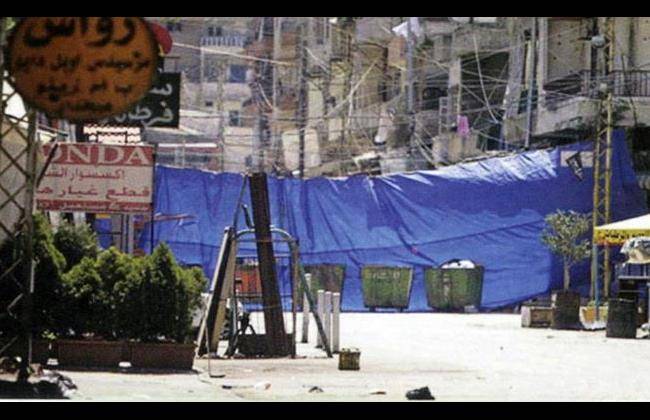
Agial Art Gallery, October 28 – November 14
One of the most influential painters in the Arab world until his passing in 2004, Chafic Abboud is regarded as one of the expressionist masters of Lebanon with a painterly lineage back to the studios of 20th century French masters such as Metzinger and Leger, themselves affiliated with the early avant-gardes of European modernism. Abboud, for his part, made a deliberate choice to remain anchored in a style of painting closer to his homeland without forgetting his abstract heritage. This exhibition, curated by Saleh Barakat, brought together a number of studies on the female form throughout his career, ranging from basic sketches to works on paper that reveal the same mature Abboud whose paintings are regarded as masterpieces of the 20th century.
Michelangelo Pistoletto
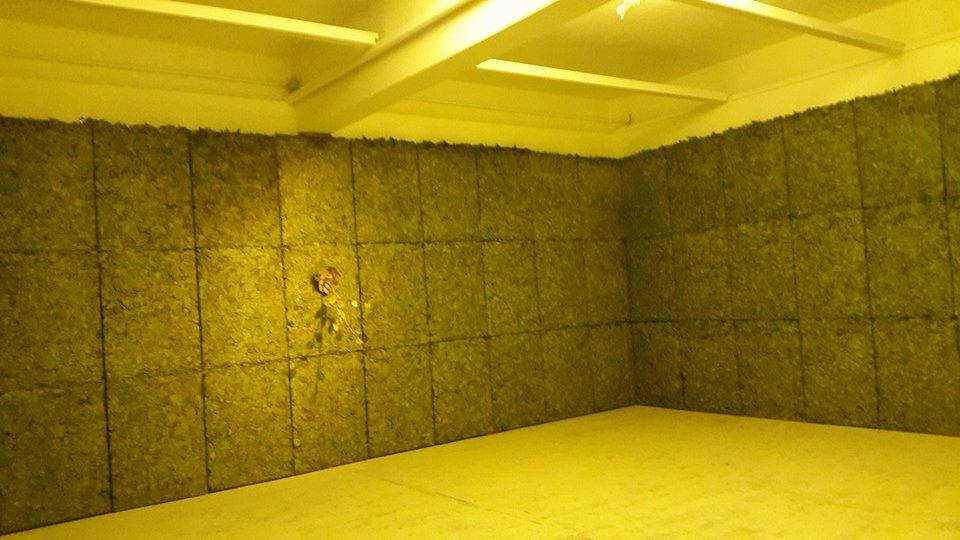
Beirut Exhibition Center, November 11 – January 11
A leading Italian artist since the 1960s, Pistoletto is one of the artists behind the Arte Povera movement in Italy, one of the last grand movements in European art that sought to develop a practice oriented more towards fundamental relationships with society rather than mere aesthetic value. This large exhibition, a joint effort between Solidere, Galerie Tanit, Galleria Continua and Pistoletto Foundation in Biella, brought to Beirut an impressive array of works spanning through sixty years, from his very well known early sculptures to the celebrated mirrors that have for long become treasured market items all over the world. A number of very meditative pieces confront the viewer with the elemental message of Pistoletto’s project, highlighting the discursive relationship between man and his cosmos.
“Trans-Oriental Monochrome” by John Carswell
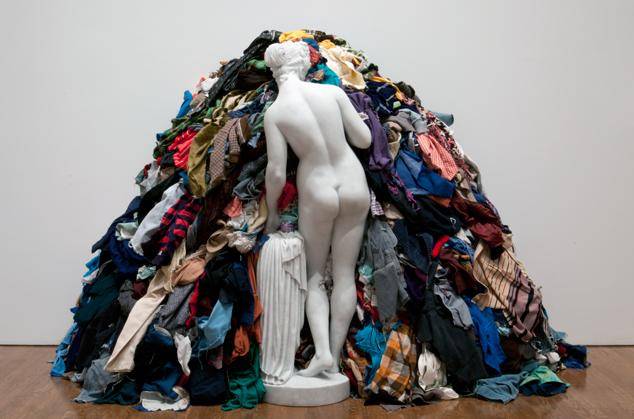
American University of Beirut, AUB Byblos Bank Art Gallery and Rose and Shaheen Saleeby Museum, November 19 – February 25, 2015
The AUB galleries, headed by curator Octavian Esanu, seem to be on a rather obscure but radically interesting mission: to produce curious historical exhibitions that no art gallery or institution in the country could, playing a complementary role to these institutions and digging out interesting moments in Lebanese art and culture. Carswell, a professor at AUB until the war and later on a specialist in Asian art, has been a dedicated student of Oriental art. Served by a constructivist language and created in the energetic Beirut of the 1960s, he brought forward a series of pioneering paintings, sculptures and objects in a formal monochrome language that were characteristic of late Modernism, but reevaluated and readapted.
“Exposure 6: Under Construction”
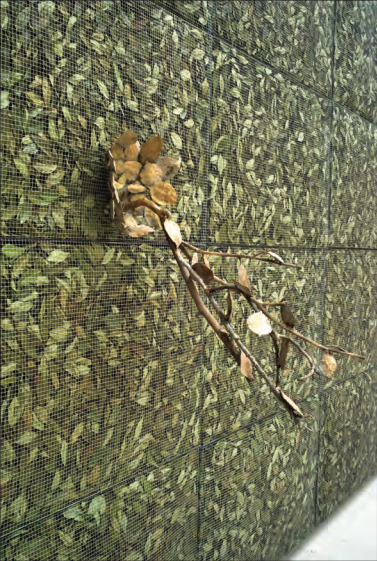
Beirut Art Center, December 12 – February 7, 2015
For its sixth edition, “Exposure”, one of the Beirut Art Center’s signature shows which seeks to promote young talent from Lebanon or artists who are in some way connected to the country, has delivered its most professionally curated edition of the show to date under the newly appointed director Marie Muracciole. The exhibition is consistent and speaks fluently the language of global art while firmly anchored in the contemporary issues of a turbulent region. The best in the exhibition: a series of architectural collages by Hiba Kalache; a new and rather controversial video-art piece by Roy Dib; the delicate and yet politically poignant works of Nour Bishouty; and as an extra bonus, unexpected in this format of exhibitions, paintings by Tala Worrell. The theme of the show is omnipresent in the works, and the pieces elegantly executed.
1
